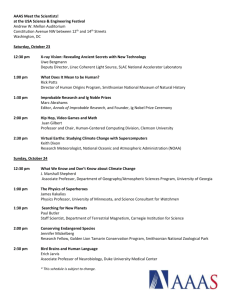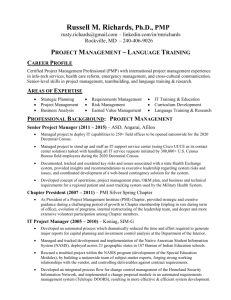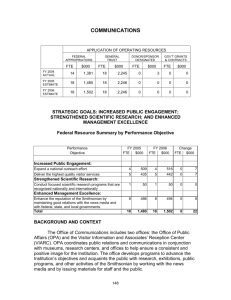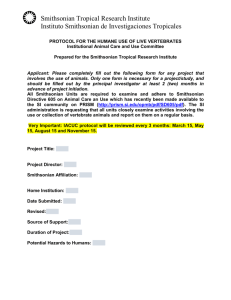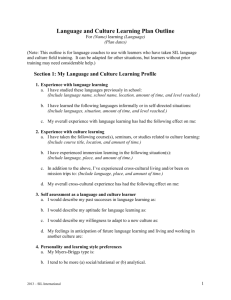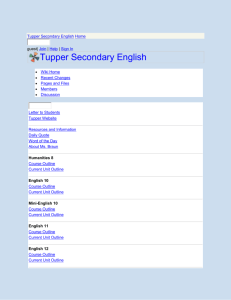Engineering Journal Presentation
advertisement
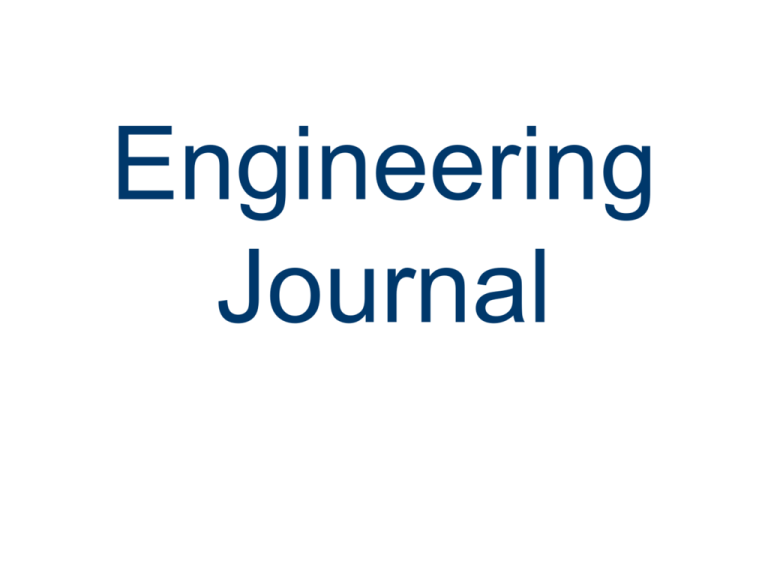
Engineering Journal Engineering Journal • • • • • • • • What Is an Engineering journal? Why Keep an Engineering journal? Who Keeps an Engineering journal? Contents Engineering journal Sections Standard Page Layout Best Practices Historical Examples What Is an Engineering Journal? An engineering journal is a book in which an engineer will formally document, in chronological order, all of his/her work that is associated with a specific design project. • Clear and detailed description of your design process • Someone unfamiliar with work could take over project without additional information ®istockphoto.com Why Keep an Engineering Journal? An engineering journal is recognized as a legal document that is used in patent activities to… • Prove the origin of an idea that led to a solution • Prove when events or ideas occurred • Prove diligence in turning the idea into a solution • Prove when an idea became a working solution (“reduced to practice”) ®istockphoto.com Who Keeps an Engineering Journal? Engineers that work on R & D • Legal documentation of work • Continuity in projects Engineering students • High school and college • Develop time management skills • Improve research, documentation, and communication skills • Basis for professional presentation of work ®istockphoto.co m Contents • Discovering the problem • Research • Sketches with labels and descriptions • Brainstorming • Calculations • Your daily thoughts and ideas • Pictures • Expert input (names, positions, contact info, details of conversations) • Work session and meeting summaries • Test procedures, results, and conclusions • Digital technical drawings • Design modifications Everything you do/think related to a specific design project Engineering Journal Sections • Title Page • Table of Contents • General Chronological Entries • References • Business/Expert Contacts Standard Page Layout • Quad ruled paper • All pages are – Numbered – Dated – Signed by the designer – Signed by a witness – Include a statement of the proprietary nature of journal Best Practices • All work is in pen. • Markers that bleed through the paper are not used. • Pages are sequentially numbered in ink on the top outside edge. • journals are bound. – Cannot add pages – Cannot remove pages Best Practices • Entries begin at the top of the page, working left-to-right and top-to-bottom • Do not leave blank space. If there is extra space, draw an X or a line across it and sign. Best Practices • If you make a mistake, draw a line through it, enter the correct information, and initial the change. • Never erase or remove anything. Best Practices • Date each entry Best Practices • Inserted items are permanently attached – Glue is preferred – No loose leaf items • Sign your name so that it extends across both the journal page and the inserted document. Best Practices • Sign and date each page before the next page is started. • A colleague or mentor should corroborate the events and facts on each page and sign as a witness. • Store the journal in a safe location. Best Practices • Sketches – Label all parts of the sketch – Describe each sketch Best Practices • Calculations and figures are clearly labeled. Best Practices • Progress Entries – Reflect on tasks accomplished, successes, and failures – Reflect on future needs and tasks to be completed Best Practices Be NEAT, be ACCURATE, be LEGIBLE, and be THOROUGH. Historical Example • Page from Earl Silas Tupper’s (1907 1983) “Invention Diary and Sketchbook” • Mr. Tupper developed a wide range of inventions, including Tupperware Courtesy of Smithsonian Institute: http://sil.si.exhibitions\doodles Historical Example • Everett Huckel Bickley (1888-1972) original design notes, for an electro-mechanical fly catcher, 1943 • Mr. Bickley developed dozens of inventions. His most lucrative invention was a bean-sorting machine that separated good beans from bad. Courtesy of Smithsonian Institute: http://sil.si.exhibitions\doodles Historical Example • Howard Head (1914 – 1991) original design for an over-sized tennis racket, 1974 • The larger racket more than doubled the sweet spot of the traditional racket Courtesy of Smithsonian Institute: http://sil.si.exhibitions\doodles Course Binder • Differs from the Engineering journal • Used to store all course material not included in the Engineering journal including – Activities – Research – Reference material – Handouts Engineering Journal • • • • • • • • What Is an Engineering journal? Why Keep an Engineering journal? Who Keeps an Engineering journal? Contents Engineering journal Sections Standard Page Layout Best Practices Historical Examples Reference Tupper, E. S. (1939). Invention diary and sketchbook. Retrieved from Smithsonian Institute website: http://www.sil.si.edu/exhibitions/doodles Bickley, E. H. (1943). Design notes. Retrieved from Smithsonian Institute website: http://www.sil.si.edu/exhibitions/doodles Head, H. (1974). Design drawing. Retrieved from Smithsonian Institute website: http://www.sil.si.edu/exhibitions/doodles

